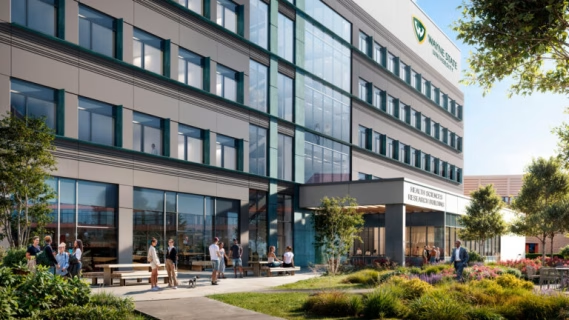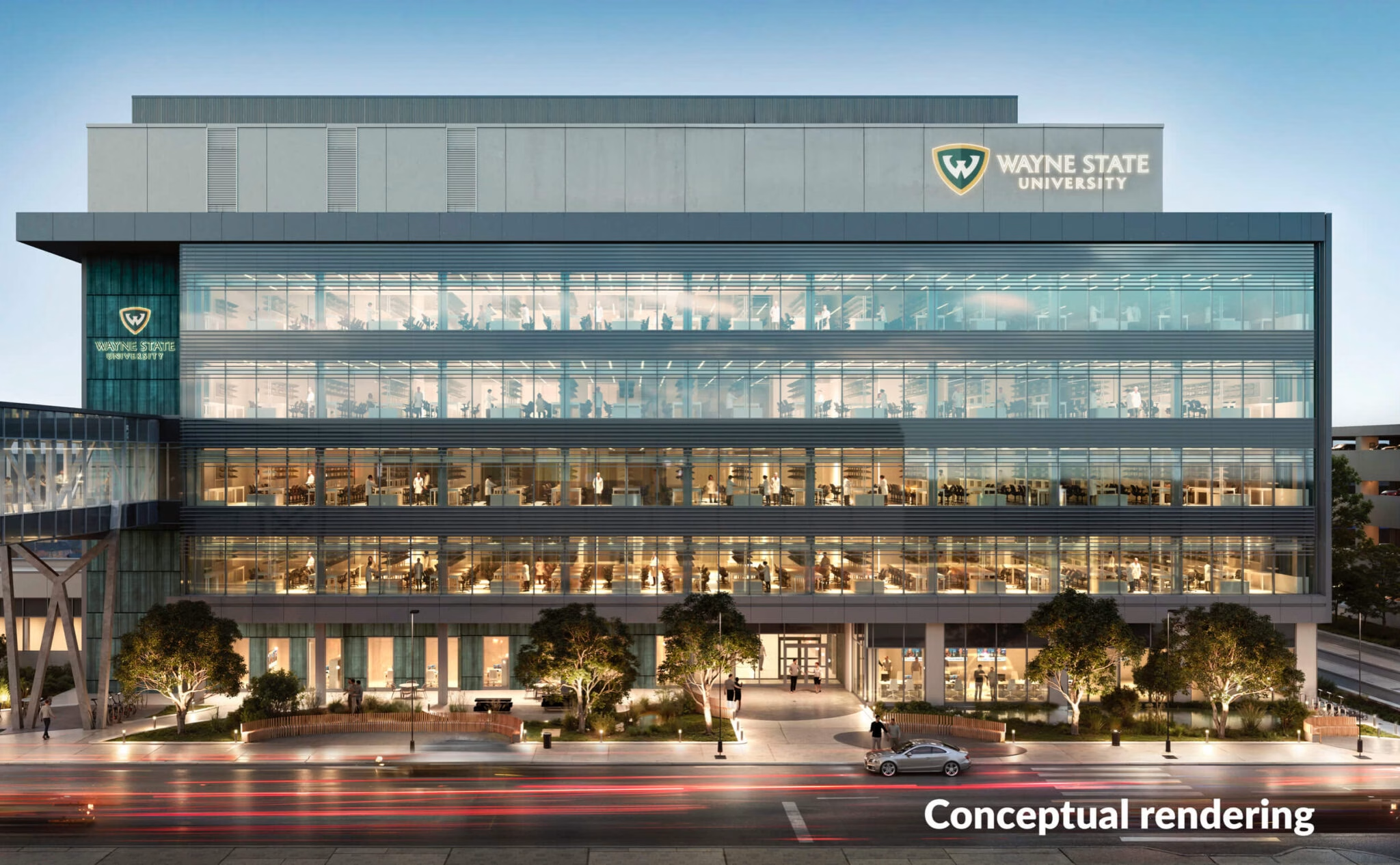Wayne State University recently broke ground on a new, state-of-the-art health sciences research facility. The university says the $200 million investment will push forward medical innovation. The building will advance research in oncology, neuroscience, immunology, metabolism, and infectious diseases. Moreover, it supports its mission to tackle major public health challenges.
The ceremony featured university leaders, local officials, and donors. They described the project as transformational, and thus a major boost for Detroit’s research ecosystem. Meanwhile, construction is expected to proceed over the next few years.
Mission, Scale, and Connectivity
The new facility will span five stories, with roughly 160,000 square feet of research and laboratory space. It will rise on a current parking lot site at 545 E. Canfield St. Across the site, it will link via a pedestrian bridge to adjacent research buildings. The design also ensures walkways to the Elliman Research Building and Gordon H. Scott Hall.
With the building, Wayne State aims to accelerate translational research and attract leading faculty and funding. In particular, the facility is expected to support cross-disciplinary collaboration between basic science and clinical teams.
Project Factsheet
Project Name: Wayne State Health Sciences Research Building
Location: 545 E. Canfield Street, Detroit, Michigan
Size: Approx. 160,000 ft², five stories
Budget: $200 million
Key Research Areas: Oncology; Translational Neuroscience; Immunology; Metabolism & Infectious Diseases
Site: Former University parking lot No. 75
Connectivity: Bridge to Gordon H. Scott Hall; walkway to Elliman Research Building
Construction Timeline: Begin fall 2025
Stakeholders: Wayne State University, local government, donors
Economic and Community Impact
This project is projected to generate hundreds of construction jobs during the build phase. After completion, it may yield dozens of full-time research and administrative positions. Moreover, the presence of the facility may catalyze further development in Detroit’s innovation and life sciences sectors.
Similar to DePauw University’s recently announced $80 million athletic stadium and sports performance center project, the initiative highlights how major institutional investments can drive local job creation, strengthen community infrastructure, and stimulate long-term economic growth across multiple sectors.
In addition, it could help the university secure more federal grants and private funding. Over time, breakthroughs from the facility may support commercialization, startups, and local biotech investments. Thus, the ripple effects could extend beyond campus boundaries, similar to how key healthcare construction projects across the United States are driving regional innovation and economic growth.

Future-Focused Design and Opportunities
While the original article does not mention sustainability, the university may adopt green building practices such as energy reuse, lab exhaust heat recovery, and water recycling. Many modern research buildings now aim for LEED certification or comparable standards.
Also, integrating community health partners could magnify impact. For example, the university could collaborate with local clinics to translate research outcomes into local health improvements. Furthermore, workforce pipelines may be strengthened if local students and underrepresented groups gain access to internships in the new labs.
Meanwhile, given Detroit’s broader redevelopment efforts, this facility could help anchor a biomedical corridor. It may also join existing anchors in Midtown and New Center, contributing to a cluster of health science activity.

